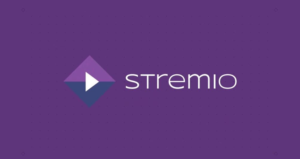Businesses in the modern digital era are continuously looking for methods to improve user experiences and attract a larger audience. Progressive Web Apps (PWAs) are a technology that has attracted much interest. Web applications known as PWAs give consumers a smooth and exciting experience across various platforms by fusing the most significant elements of web pages with native mobile apps.
However, weighing the advantages and disadvantages before choosing whether your company needs a PWA is essential. This blog article will examine the benefits and drawbacks of installing a PWA to assist you in making a choice.
PWA development: What is it?
The acronym PWA stands for “Progressive Web App.” The name tells you what it is: a PWA is a web application with extra features that provide the impression of a mobile experience. Like a typical website, it is hosted on a server and reachable through a browser. PWA uses HTML, CSS, and JS, the same technologies used in “traditional” web applications. Said it makes the website accessible to mobile devices. Like any other application, it too may be pinned to the list of programs. When the user opens a pinned PWA, a mobile UI is displayed.
Advantages of using PWA for your business
- Low Costs of Development
PWAs don’t need distinct versions for different devices because a single progressive app may function on all endpoints. As a result, it drastically minimizes the development effort required to establish a PWA, which lowers the cost. The cost is three or four times cheaper than a native mobile app.
- Greater Efficiency
PWAs efficiently cache and deliver text, pictures, and other material to function like websites and significantly increase operating performance. Flawless performance and speedy operation influence the user experience and conversion rates.
Retailers and content providers should employ this software since it enhances retention and client loyalty while providing a better user experience than mobile applications.
- No Update Problems
Because of a particular feature, PWAs may update without alerting or disturbing users with permission requests. The need to download and install batch modifications is removed by these applications, which automatically update whenever users use them. They only offer a fresh appearance without any human involvement.
However, some developers of advanced applications notify users through push notifications when a new version is available. However, the information and material consumers access are entirely controlled by creators.
- Native Attraction
PWAs provide a native-like experience with an adaptable aesthetic on all smart devices. It operates offline and offers the option for push notifications, loads precisely like a regular website, and can be installed on a phone’s home screen. All major web browsers can use them, and all the top search engines rank them higher.
- Continuous Offline Operation
PWAs are far more practical than webpages, which depend on a reliable internet connection because they can run offline or in vulnerable networks. Users may view progressive web apps without an internet connection thanks to built-in service workers that automatically cache key functionality and data. This removes the need to download the apps.
Its foundation is storing data that users have already visited, such as pages. A particular offline page may appear if they attempt to open any that they still need to view online. This option allows retailers to keep more customers by keeping them from leaving their catalogs.
- No reliance on app distribution services
For example, the App Store, Google Play, and Microsoft Store have strict rules on the applications that may be found in their databases. It could take a lot of time and effort to meet their demands.
In certain circumstances, if a business doesn’t comply with any standards, services will also omit apps from databases without warning. Therefore, manufacturers may avoid complicated reconciliation processes because PWAs do not require storage in comparable services.
- They can be linked
Traditional web applications, unlike native mobile apps, may be accessed directly from a URL without any setup or installation. By connecting directly to the page, you want viewers to read and even anchor to specific text; you can quickly urge them to interact with a piece of information using that URL structure.
Driving certain user activities within native mobile applications may require additional UI development and methodical in-app communication.
- Discoverability and SEO
In-depth website functionality, database access, and automated data are all included in advanced web applications. PWAs can therefore be indexed by Google, Bing, and other search engines. In the end, it facilitates clients finding and downloading your PWA. Thanks to new search algorithm changes, PWAs are now simpler to find on Google. They are additionally increasing page visits and traffic by indexing advanced web applications.
- Superior to regular web applications
PWAs are superior to traditional web applications in terms of load speeds, responsiveness, and the number of smooth animations since they are made to be data-efficiently lightweight. These factors provide a more enjoyable, scalable, and adaptable user experience across different devices.
PWAs are intrinsically more compatible than traditional web applications and native mobile apps because they may employ progressive enhancement techniques to run across many browsers and devices, even when those browsers don’t share the same capabilities.
- Characteristics particular to a platform
The fact that PWAs can benefit from several platform-specific characteristics must be included in any assessment of the primary benefits and drawbacks of PWAs. For instance, PWAs may be permanently installed on a user’s home screen and offer web push notifications that behave like standard push notifications. They can access locational data, operate in full screen, alter display orientation, start with a customized splash screen, and do much more.
- Workable on slow network
Progressive web applications can still work on a slow and unreliable internet connection. When your consumers experience a network connection problem, the built-in service workers of PWAs store and cache the information for subsequent presentation. Additionally, especially in cases of bad internet, it enables access to the PWA without downloading it.
Disadvantages of using PWA for your business
- Problems with old technology
Since PWAs are relatively new, it shouldn’t be surprising that some older mobile devices and web browsers don’t properly support them. Although this issue will unavoidably be resolved in the future, certain businesses may experience client complaints.
- Inability to access app stores
If you create a PWA, the Apple or Android app stores do not reveal your firm. Apps are frequently discovered since they are readily available on one of the well-known app stores. The fact that you cannot use this “springboard” to reach a larger audience is, thus, a significant drawback.
- No more space for a business concept
Creating a business model or advertising opportunity for PWAs is still a challenge. There are now fewer possibilities for subscriptions than there are for native apps.
- Limited Capability
Only some features of the gadget can be used. For instance, you cannot access Bluetooth, contacts, or calendars. When your application must heavily use a device’s hardware, a native app is typically preferable over a PWA. For instance, native development is usual for Bluetooth-based solutions like file sharing and Bluetooth messengers.
Who uses PWA?
PWAs are now a popular subject at conferences worldwide, and there’s little question that they’ll soon upset web development, just like responsive websites did when they redesigned the web.
The top firms already use PWA to bridge the gap between native and online apps, like Google and Microsoft. Even if they aren’t as enthused about the technology, Apple has joined them.
Nevertheless, technology is developing and finding more and more utility in actual products. Many prominent firms have used PWA thanks to the backing of IT behemoths. Here are a few:
- OLX
- Alibaba
- Ali-Express
Is A PWA Ideal For The Development Of Your Business?
In every sector, dependable tools and straightforward procedures may fuel corporate success. Progressive web apps can unquestionably be of excellent assistance in this situation. When a consumer installs your software, the sensation is priceless. It represents the user’s perception of your brand’s trust, leading him to install your app above all the alternatives. Outsource or hire full stack developers will cost lesser and make effective application.
It benefits the company in several ways. In addition to removing additional costs, this reduces the risk of data leaks and online fraud. In contrast to a native app, a PWA is quicker and easier to update.
The cornerstones of solid and successful communication between a user and a company are, thus, simple updating, push alerts, and home screen access. PWAs are the best at providing an outstanding user experience, which increases the likelihood that a user will stay on your website and increase the likelihood of conversions.
Among the numerous elements that make PWA excellent for company growth are the three listed below:
User Experience Specific to a Platform
User happiness is increased by creating a single code base that works on many platforms and offers a platform-specific user experience. This necessitates the need for new users.
Support across Platforms
Reaching more consumers than previously is made possible by the support of various platforms, including mobile and online. Here, a single website provides native app-like experiences across mobile devices, meeting the demands of both online and mobile customers.
This helps you save a substantial sum of money since you avoid having to create a unique mobile app. Cross-platform compatibility is a crucial feature of PWA app development, making it a perfect choice for small-scale organizations.
Shortened Load Time
Most organizations nowadays want user-friendly, quick-loading websites and applications that are lightweight and easy to browse. However, since they require more storage, native mobile apps are often larger.
Making PWAs in this situation can be your best option because they significantly speed up website loading. Advanced web applications are more minor on desktop and mobile platforms and load more rapidly than standard web pages.
Consequently, it boosts user engagement across all mobile devices and enhances the user experience.
Additional Tips for the Best PWA
- Don’t limit the idea:
It’s no secret that PWAs enable businesses to interact with consumers without requiring them to download or maintain native applications. The UX of a PWA is consequently geared toward mobile as we frequently picture a mobile browser user when thinking of a PWA. However, users may use a PWA on a desktop or laptop computer.
- Keep easy installation process:
The installation procedure is one thing to keep in mind. For PWAs, this step is a little more difficult for the user to complete, but it is essential if they want to have an icon for the app on their home screen. You should include clear, basic instructions on the page where users may download apps.
- Add less but wise content:
On each page with high importance, pay attention to any distracting items. Ensure that no motorized sliders or blinking advertising grabs your users’ attention. Attempt to limit the amount of information unrelated to the primary call to action.
- Conscious about the push notification:
After the visitor begins using your PWA, do not interrupt him and request authorization to deliver push alerts. Give the visitor a little time to explore the PWA and become acquainted with the information you offer. Additionally, segment your subscriber base to prevent everyone from receiving the same message. Improve the click-through rate of your push notifications by making them as personalized as possible.
The users of your PWA should receive the information they need as quickly as feasible while utilizing it. You may shift the scales in your favor by minimizing text, minimizing the number of clickable buttons, and explicitly stating the goals of the PWA.
PWA: The Future of Mobile App
We are now at the point where we can fully understand PWA’s direction. The popularity of smartphone applications nowadays cannot be disputed, either. PWAs may eventually entirely eclipse mobile applications, but only time will tell. Or, we’ll let you make the choice.
PWAs unquestionably win prizes for development costs, ease of use, performance, responsive design, user experience, and more. PWA development and mobile applications both have advantages and disadvantages.







